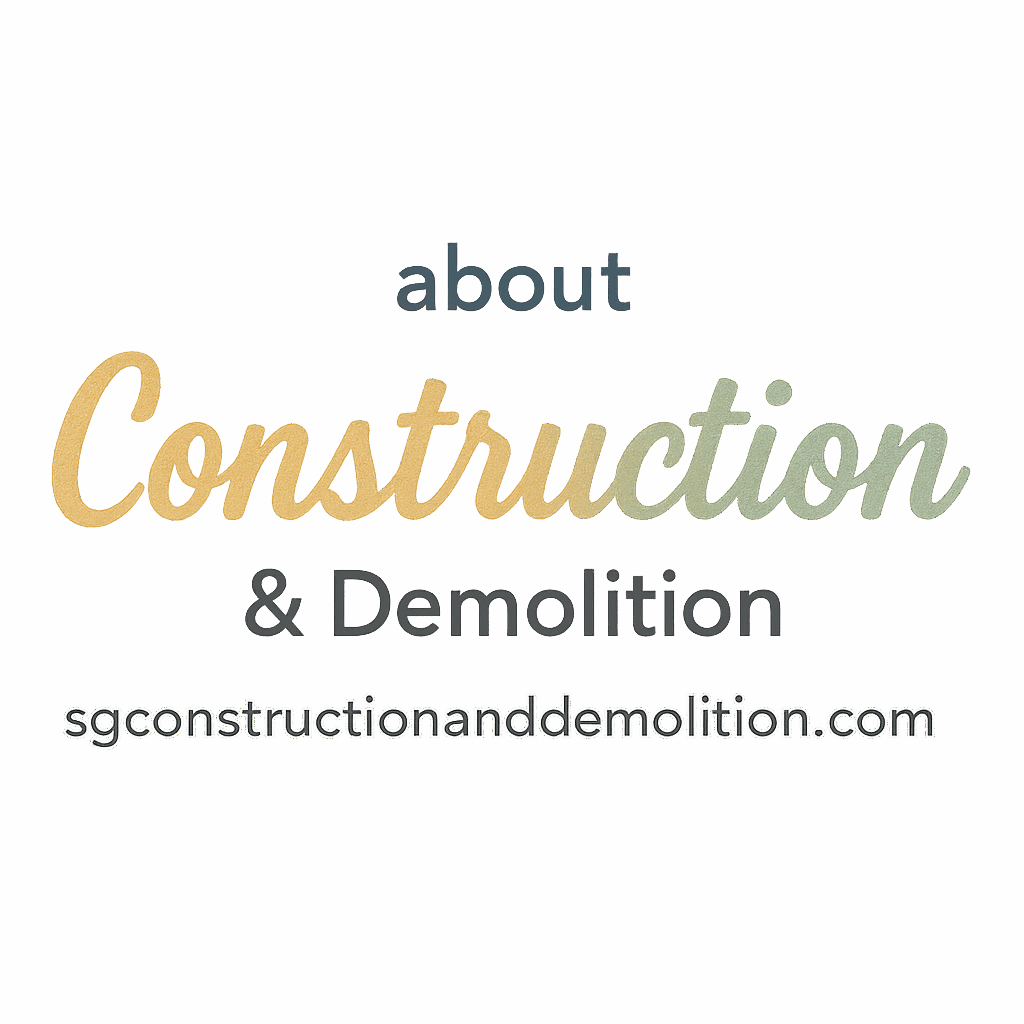Introduction: The Backbone of Every Job Site
Step onto any construction site, and you’ll hear the unmistakable buzz, hum, and whir of power tools hard at work. From cutting timber to fastening beams, these tools are the unsung heroes that keep everything running smoothly. Whether you’re building up or tearing down, power tools in construction aren’t just nice to have—they’re essential.
In this article, we’ll walk you through 6 power tools used daily in construction, showing how they speed up workflows, improve precision, and keep projects on schedule. This guide is perfect for pros, DIYers, and even curious beginners. And if you’re still unsure about your tool setup, we’ll also link to some helpful construction basics and equipment guides that’ll set you on the right path.
Why Power Tools Are Essential in Construction
Speed and Efficiency
Gone are the days when manual saws and hand drills ruled the worksite. Power tools can cut, drill, grind, and fasten in a fraction of the time, allowing teams to hit tight deadlines without compromising on quality.
Precision and Accuracy
With adjustable settings, laser guides, and high-torque motors, modern tools make it easier than ever to deliver top-tier craftsmanship. No more guessing cuts or eyeballing holes—these tools are built for exactitude.
Reducing Manual Labor
Power tools reduce physical strain. Instead of spending hours hand-sanding a wall or hammering in hundreds of nails, you can let the machines do the heavy lifting—literally. This isn’t just convenient; it helps prevent injuries from overexertion.
Safety First: Planning Before Powering On
Before you grab that drill or saw, think safety. Power tools are efficient, but also potentially dangerous without proper precautions.
The Role of Proper Training
Every tool has a learning curve. Knowing how to use your equipment properly can save fingers, time, and money. Our planning and safety guide is a great place to start.
Importance of Using the Right Tool
Misusing a tool can damage materials—or worse, cause injury. For example, using a grinder to cut wood? Not ideal. That’s why understanding tool purposes (like the techniques behind each one) is crucial.
Linking Safety and Productivity
A safe job site is an efficient job site. When workers feel secure and confident, they can focus on performance rather than potential hazards.
Power Tool #1: Cordless Drill
Everyday Uses on the Job Site
The cordless drill is the Swiss Army knife of construction tools. From driving screws to boring holes in wood, metal, or drywall, this tool is a must-have. It’s lightweight, powerful, and portable—making it perfect for tight spaces or quick tasks.
Must-Know Tips for Longevity
Drill Bit Selection
Use the right bit for the material you’re working with. Trying to use a wood bit on metal? Not a good idea.
Battery Maintenance
Keep extra batteries charged and rotate usage to extend their lifespan. Many pros invest in smart battery platforms to track usage—part of the smart tech trends shaping construction today.
Power Tool #2: Circular Saw
What Makes It a Must-Have
Need to cut lumber, plywood, or even light concrete? A circular saw is your go-to. It delivers straight, clean cuts with serious speed. Most pros use it for framing and structural builds.
Pro Techniques for Cleaner Cuts
- Use a guide rail for longer cuts
- Let the saw do the work—don’t force it
- Check blade sharpness regularly
It’s also one of the most commonly used tools in demolition and remodeling, tying into popular demolition techniques used across job sites.
Power Tool #3: Reciprocating Saw
Perfect for Demolition Work
Need to cut through nails, wood, metal, or even drywall? The reciprocating saw, or “Sawzall,” is your wrecking crew in a handheld package. It’s often used in demolition jobs because it tears through tough materials quickly.
Check out more on demolition if you’re interested in how this saw plays a role in major teardowns.
Safety Tips While Operating
- Wear goggles and gloves
- Keep both hands on the saw
- Let the blade reach full speed before cutting
Power Tool #4: Angle Grinder
Versatile Cutting and Grinding Abilities
Angle grinders can slice through metal, grind down concrete, and even polish surfaces. Attachments range from cut-off wheels to wire brushes, making it one of the most adaptable tools around.
Common Attachments and When to Use Them
- Cut-off discs for slicing metal rods or rebar
- Flap discs for smoothing surfaces
- Diamond blades for tougher concrete or stone work
You’ll find this tool in nearly every contractor’s toolbox, especially those dealing with electric or metal-based installations.

Power Tool #5: Nail Gun
Speeding Up Framing and Finishing
If you’re still swinging a hammer, it’s time to evolve. Nail guns can fire dozens of nails per minute, cutting framing time in half. They’re commonly used in wall framing, roofing, and baseboard installation.
Safety Precautions That Can’t Be Ignored
- Never point it at anyone—even as a joke
- Always disconnect the air hose or battery before loading nails
- Use the proper pressure settings for the material
Looking to streamline your process? Nail guns are one of the best tools for optimizing construction methods on-site.
Power Tool #6: Power Sander
Surface Preparation and Smoothing
Before painting, staining, or sealing, surfaces need to be smooth. Power sanders can finish drywall seams, polish wood, and even clean metal. They’re an essential tool during both construction and remodeling phases.
Choosing the Right Sander Type
- Orbital Sanders – great for small, curved areas
- Belt Sanders – ideal for larger, flatter surfaces
- Detail Sanders – perfect for tight corners and edges
Power sanders are highly valued for fine finishes and play a role in almost every step of the final build process.
Maintenance: Keeping Your Power Tools Job-Ready
Regular Inspection and Cleaning
Dust, debris, and buildup can drastically reduce the lifespan of your tools. Use compressed air to blow out sawdust and wipe surfaces after every use.
Storing Tools the Smart Way
Store tools in dry, padded cases or climate-controlled toolboxes. Want to protect your investment? Read up on tool-related myths and misconceptions to avoid costly mistakes.
Green Trends and Smart Tools in Construction
Battery Technology and Eco-Friendly Innovations
Lithium-ion batteries now last longer and charge faster. Some tools even integrate with solar-powered chargers. This aligns with current green construction trends.
Tools That Sync with Smart Devices
Modern power tools now offer Bluetooth connectivity for tracking tool usage, battery life, and diagnostics. Welcome to the future of smart tech in construction.
Final Thoughts
There you have it—6 power tools used daily in construction that no site should be without. These tools save time, boost quality, and make your work safer and more efficient. Whether you’re framing a house or demolishing a wall, the right tool makes all the difference.
If you’re just getting started, don’t miss the best tools and equipment resources or our beginner-friendly construction tips.
FAQs
1. What’s the most important power tool in construction?
The cordless drill tops the list because of its versatility—it drills, drives, and fastens with ease.
2. How can I make my power tools last longer?
Clean them regularly, store them properly, and perform periodic maintenance like battery cycling and blade replacement.
3. Are cordless tools powerful enough for heavy-duty construction?
Absolutely. Modern battery-powered tools rival corded ones in power and offer better mobility.
4. How do I choose between different brands?
Look for durability, battery life, warranty, and whether the brand offers a complete ecosystem of tools.
5. Can beginners safely use these tools?
Yes, but training and reading manuals are essential. Check out our beginners tag for more help.
6. Are power tools environmentally friendly?
With lithium-ion batteries and eco-conscious designs, many tools are now part of green innovation movements.
7. Where can I learn more about planning a tool setup?
Visit our detailed guide on planning and safety for everything from project flow to tool prep.


